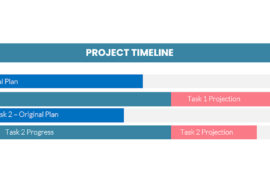 One of my favourite advertisements for project management software over the last couple of years shows a harried project manager with his head in a photocopier trying to clone himself in a desperate attempt to get more resources for his project. It’s a sentiment almost everyone in the IT community can sympathize with lately. If there is a CIO in the country ready to say “I’ve got more than enough resources,” I’ve yet to meet him.
One of my favourite advertisements for project management software over the last couple of years shows a harried project manager with his head in a photocopier trying to clone himself in a desperate attempt to get more resources for his project. It’s a sentiment almost everyone in the IT community can sympathize with lately. If there is a CIO in the country ready to say “I’ve got more than enough resources,” I’ve yet to meet him.
The tradition method of increasing resource levels has always been to just hire more. Yet that option is becoming increasingly difficult for various reasons:
First, resources are often scarce. With IT project being ever more complex, programmers for varying development environments, systems analysts and others are sometimes hard to find. Recruiting and retaining key staff has become a full-time job for some managers.
Secondly, certain key skills are harder to come by than anything. One of the things that IT project managers come to know quickly is that the resource they absolutely need is the same person every other project manager in the organization needs. The particular combination of knowledge, skills, knowledge of existing systems and experience makes certain technical people unique.
With the traditional method of resolving resource conflicts cut-off, many CIOs are looking to become more effective at managing what they have. Getting the most out of your resources is one of the promises of project management software and so it is no surprise a that the Project Management Institute is seeing more new members from the computer industry than any other.
So, what can you do to get the most out of your resources? Here are a few suggestions:
Find out what people are actually doing
This is no small thing. In many organizations, the amount of time “lost” in unallocated time is startling. For these organizations, there can be tremendous improvements in efficiency just in determining what people are spending their time on. An electronic timesheet system designed for project use finds a good target here. The system should be able to restrict the permissible charge codes to only those which have been created and authorized. This prevents countless hours from the dreaded “999 – miscellaneous” code. In one organization we’ve done some work for, implementing an electronic timesheet system “found” $60,000 worth of hours in the first month alone.
A corollary to this is to ensure that people are doing what they were scheduled to do. When we implement an enterprise-wide timekeeping system, managers are almost always amazed at what people are spending their time on. In some cases, staff members start working on tasks which were never part of they original project specification but that they think will be important.
Prioritize
Getting the right people to work on the right task is the next challenge. Project Management software which can identify tasks which should be completed before others and tasks which will have a greater impact on the total project (or projects) schedule allows a department manager to keep people focused. Applying an 80/20 rule to the problem says that 20% of the tasks will likely take 80% of the time. No problem if these are the most critical tasks on the project but in example after example, we come across projects which are running late where a significant proportion of the development team are mired in program cosmetics which were never part of the original specification (cute though they may be). A very clever coach once told me “work-ability before impeccability” telling me that while impeccable work was desired, just getting it working was ultimately more important. I’ve heeded the lesson since. When we do development now, we get the function working, before we add the spice, bells and whistles.
Resource Levelling
Some project management systems do a good job of providing resource levelling analysis. This analysis tells the manager where tasks will have to be scheduled in order to get the earliest possible date with the resources available. An advanced package will include the ability to show both a time-constrained analysis and a resource-constrained analysis at the same time. The time-constrained analysis assumes that additional resources could be made available but that the project schedule is inviolate. A report of this type of analysis will show the additional resources required in order to accomplish the schedule. The resource-constrained analysis assumes that no additional resources are available and that the schedule can be extended. A report of this type of analysis will show how long the schedule must be extended in order to complete the work with the staff available.
Neither of these analyses should be taken at face value. There are many techniques for advancing a schedule with limited resources including re-sequencing the tasks, changing durations, applying overtime and so on.
What is useful here is to find periods of peak resource requirement early enough to allow the manager to make preparations or to mitigate the problem. If there is enough notice, the manager can make a remarkable impact on the availability of resources for other tasks. Options for the project manager to consider include sub-contracting work, changing priorities of tasks, putting some low-priorities on hold or not starting some low-priority projects which might have otherwise taken up time. One of the things to consider is doing some work in advance in order to take advantage of some under-allocated time even if logically some of that work wouldn’t be done yet. For example, one wouldn’t typically start writing documentation until a piece of software was substantively complete. However, it might be possible to write quite a lot of system documentation and user documentation based on in-house standards and specifications. Even if some of the work had to be edited later, you would have gotten a huge jump on an area of a project which is typically a vulnerable point for project delays.
All of these techniques won’t create new staff in the morning but they have the potential to create tremendous efficiencies in resource management. Implementing any or all of these will almost always involve culture changes in your organization and, as I’ve said before in these pages, culture changes are not the easiest thing to implement. Take it one step at a time and make sure you involve the whole staff so that people know what the potential gains are for everyone if your operation becomes more efficient.
Of course, if that doesn’t work, the photocopier option is still available. It just seems, no matter how many times I stick my head in it, the copies that come out never seem to do as much work as I do.




